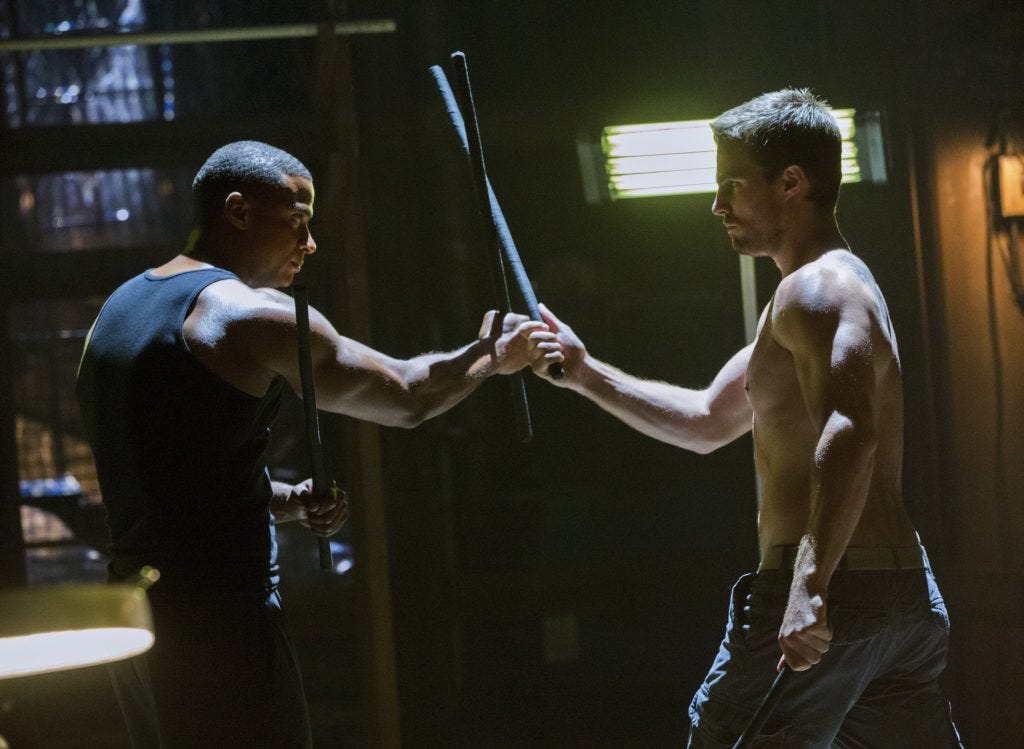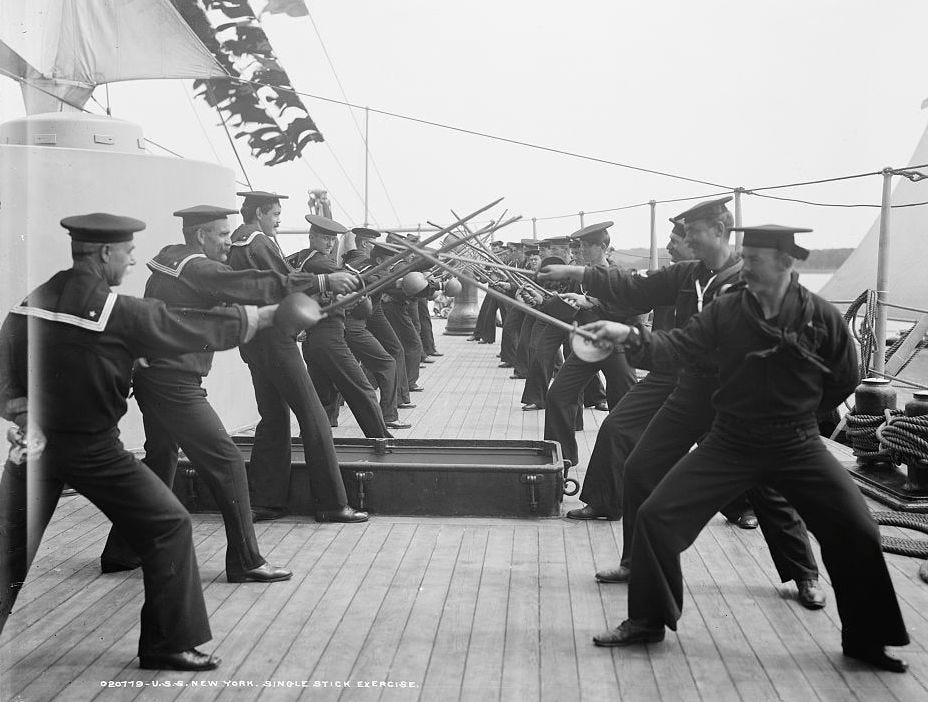The Case For Stick Fighting
Sticks are often a proxy for blades, but they also carry a utility of their own.
^Rumble video link: Stick Fighting is an Important Skill
I can’t count how many times I’ve heard FMA friends say that sticks are for children, and what they do is bladed fighting, not stick fighting. And to some degree, I can understand their point. The stick is, many times, most of the time, a surrogate for training with the blade. In fact, we see that all over the world. Sticks being used as a “safe” training tool for actual weapons of war.
While the smaller, sub-meter-length sticks used in FMA seem somewhat peculiar to them (they’re really not…) we have plenty of examples of staves, canes and cudgels across many cultures.
We can immediately say that blunt force trauma can account for hundreds of deaths per year in the US alone, and while the FBI doesn’t specify exact implements, we can assume some percentage of them are simple sticks. But we’re superheroes, right (right!?) and we’re not so interested in killing people (where unnecessary), just resolving a threat. Well, I can tell you from personal experience, that a 3/4″, 3′ rattan singlestick can break fingers through protective gloves. A couple of years ago, I got my thumb busted playing with the HEMA guys. And I’m not the only one. In fact, broken and otherwise impacted and disabled fingers is pretty common in stick fighting circles. Even when you do “everything right” you make mistakes, or the guys you’re up against just has better timing than you.
In a non-lethal scenario (we’re going to ignore self-defense claims here. Just assume what you’re doing is illegal) one of your best resolution options is to physically disable your opponent. That could mean shutting his computer off (unconsciousness) or it could mean rendering him incapable of offense via trauma to critical moving components like knees and hands. So if a very light stick can break a thumb through hard shelled gauntlets (to be fair, it was a faulty plate, and Spes Heavy sparring gloves do an excellent job of protecting and have updated the thumb design.) then a well weighted stick can bust up an unarmored opponent pretty well.
Now, on one side of the argument, if you’re using the stick as a surrogate training tool, you will need to spend a lot of time paying attention to edge alignment, and because a stick is too light and without realistic balance, you’ll still need to practice with steel where it is safe to do so to avoid false positives. This is one of the main reasons for heavy protective gear and blunt sparring swords in HEMA. This also means using the techniques of the weapon proper.
For example:
Long Pole as seen in southern Chinese Martial Arts and also in Mair‘s work is based off of the spear or pike. It should be as long as a person and half again that (8-10 feet).
Quarterstaff as used in England, and not dissimilar to the the Japanese Bo or the Chinese staff (棍 gùn, hùn, āo, gǔn) is based off of spears, halberds (-type weapons) and pollaxes depending on the specific tradition. These are typically about the height of a person, to the height plus an up-stretched arm (6-8 feet).
Great-Stick as Alfred Hutton called it, or Baton in French, Bastone in Italian, Jo in Japanese, and the Portugese play a game called Jogo Do Pau with such a stick. These tend to be used like two-handed swords, often relying on half-swording techniques as much as cuts and thrusts. I have even seen more modern systems of “short staff” based on Bayonet techniques. These sticks tend to stand about shoulder height (4-5 feet).
Canes (Canne in French), Single Stick, and Palcat (For the Polish game of Palcaty) are typically based on single handed swords, particularly sabres, back swords, and broadswords as used in the military. Similarly the Filipino Baston (among other names used in the various dialects and languages of the Philippines) as mentioned above, is based off of their single handed swords. Typically the length of an arm (2-3 feet)
There are also other various small sticks like Fiore’s bastoncello, the Filipino pocket/palm stick, the Japanese kubaton, Mair’s “peasant stick”, the Irish Shillelagh, the English Cudgel and the constable’s Truncheon, to say nothing of the various wooden weapons seen in Okinawan Kobudo, and Many Chinese martial arts.
The case for picking up a piece of wood, shaped or not, as an item of personal defense (and offense!) goes back to before codified language, before formalized martial arts. It is an excellent start to understanding improvised weapons, as a surrogate for purpose built weapons, and something that will be perennially available despite laws standing in the way of your personal protection.
No, sticks are not for children, sticks are just another tool, and if you have the gumption to look at it as a stick, techniques beyond the blade appear and are a world of their own.




